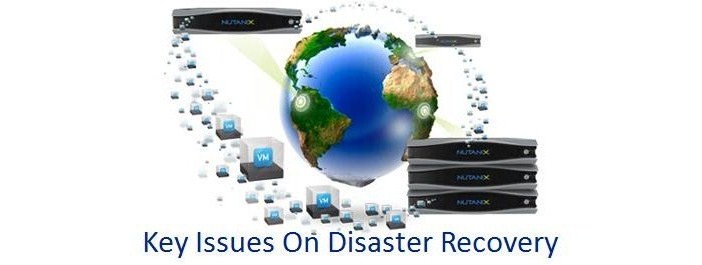Key Issues on Disaster Recovery
 Data Replication
Data Replication
One thing that becomes very crucial in Disaster Recovery is a data and information, as mentioned earlier, it is very important to maintain the consistency of data and information for the company. These needs can be accommodated using data replication technology. Data replication is a process that copies the contents of the data to a remote location either that lasted continuously or at specified intervals. Replication of data will provide complete results of data copy for disaster recovery purposes. Remote Location is usually a secondary data center.
Data replication technology has complicated functions as intelligently copy data to a location that is remote, once the complete data has been replicated to the target, it is then only the changed data to be replicated further, the resulting demands on bandwidth. Initial copy of data storage that is in a remote data center architecture is commonly referred to seeding (planting seeds). When the data is “seeding”, the next replication functions can be run in two modes, namely:
Synchronous Replication Mode
Synchronous Replication Mode allows replication of data exchange in real-time so that the data will be maintained, if the data is currently operational on the disk source, the same writing is also done on the target disk that is in a remote location. The entire process of writing on the source disk and the target disk must be completed first before moving to the next operational transactions and acknowledgment for both if it has been completed. In this replication mode, the need for high system performance should be considered. In addition, the distance between the source disk and the target disk is also the main prerequisite, that the parties involved in the replication mode should be within <100km between the two. The advantage of this mode of replication is to provide consistent recovery and complete for all periods.
Asynchronous Replication Mode
Asynchronous Replication Mode allows the exchange of data buffering in the sense that the data will be put in a ‘temporary receptacle first, then at a certain period will be replicated to disk targets’. The data is replicated to the target disk does not require acknowledgment that the writing of the transactions on the source disk can take place again. Replication mode does not guarantee the data on the two parties involved because if one happens to crash on one side and the data have not been replicated, the data contained on both sides cannot be said as a synchronous data. While this can improve system performance, but has a lot more risk. If this is the case then the recovery, it is quite complicated (do not guarantee the results of data recovery is correct and consistent because there is the possibility of the loss of some data). The advantage of this mode of replication is cost effectiveness.
In addition, based on the place where the replication process is running, the type of replication can be determined suitable for the company’s business needs, namely:
Database to Database replication process that takes place on the database server. The database server will act as a master and then there are several database servers as a slave copy of the database that stores the data. When there is the process of writing the database, the writing will be immediately sent to the master database who will then be replicated by the database server which is a slave. When done reading process in the database, it can be done on all servers available, this course will improve the performance of database systems associated with load sharing. Another advantage of database replication is the availability of a high level, because when the crash occurred on the master database server, the slave server database can take over the work of the master server.
Host to Host Replication Mode
Known also as the replication – based processor. Replication processes running on the source and target systems. Therefore, it may be a dispute between the source and the target system during the process of replication. This occurs because the agent running on each system in the running process tracking changes to data and replication data path is done through an IP connection. Data replication mode runs at the application level or OS level. Host-to-host is the most common mode of replication which is a solution implemented as software. Host-To-Host Replication exploit the resources in the source and target custom dedicated servers that will have an impact on performance, and then requires that the system is in a remote location should always be up all the time. The significant advantage of this mode of replication is agnostic storage, which means that it can be done pen – deploy early regardless of the type of storage used (internal, external, SAN or NAS ).
Disk to Disk Replication Mode
Disk to Disk Replication mode is running on an external storage device such as a SAN or NAS. This replication mode is normally implemented in a vendor-vendor disk arrays such as IBM, HP, ESDS and others. Each vendor will provide the application software that is compatible with an array of storage. Mostly disk array connections uses fiber channel so that the storage router is needed to improve the ability to connect via a WAN link. Disk-To-Disk Replication devices utilize external resources of storage and is transparent to the host.
Resources:
- https://www.esds.co.in/dc-infrastructure.php
- https://www.esds.co.in/disaster-recovery-hosting.php
- https://www.esds.co.in/turnkey-solutions.php
- How Cloud Computing Is Changing The Labor Market - March 25, 2015
- Adopting Infrastructure as a Service Can be a Good Deal - March 17, 2015
- Will Virtualize? Take These Six Points Into Consideration - March 12, 2015
